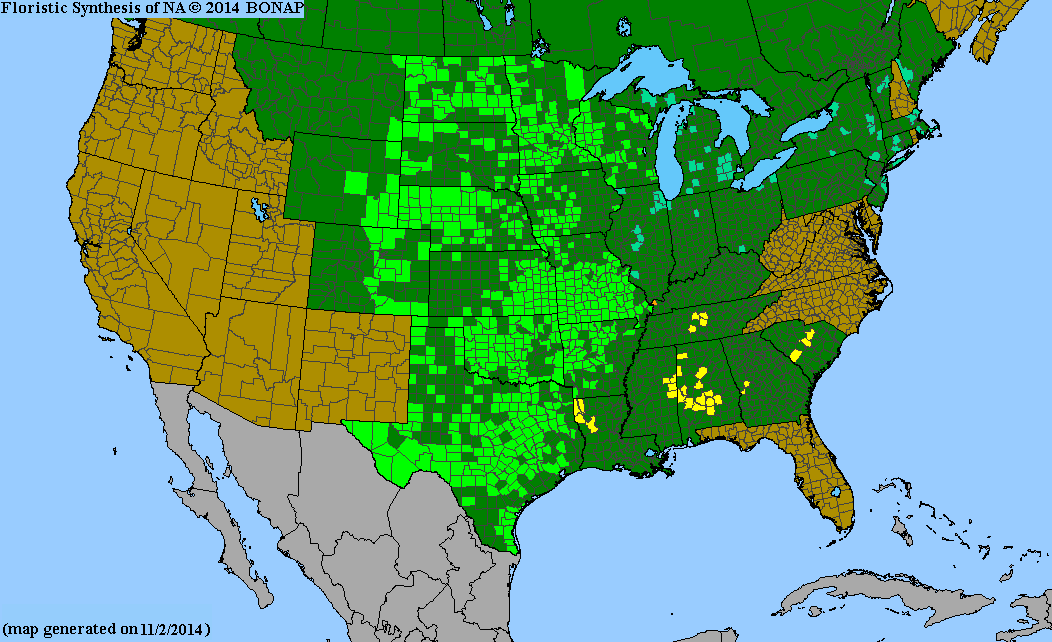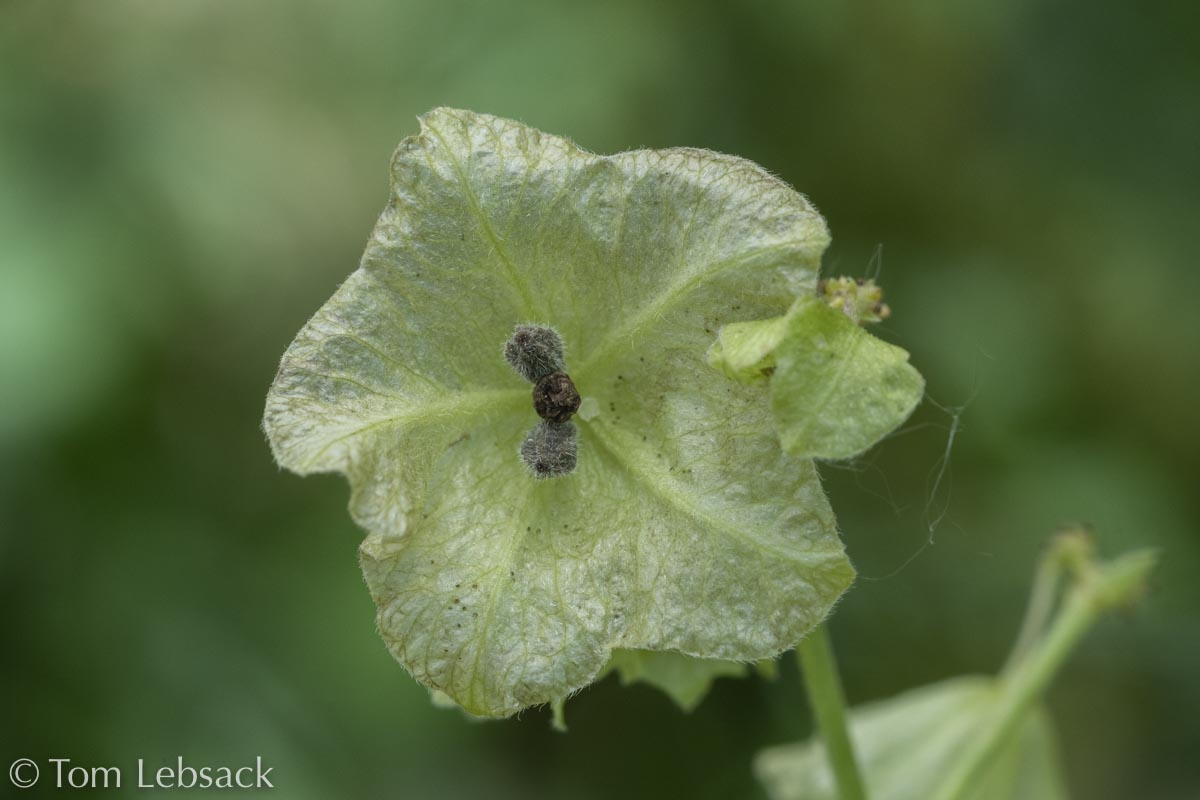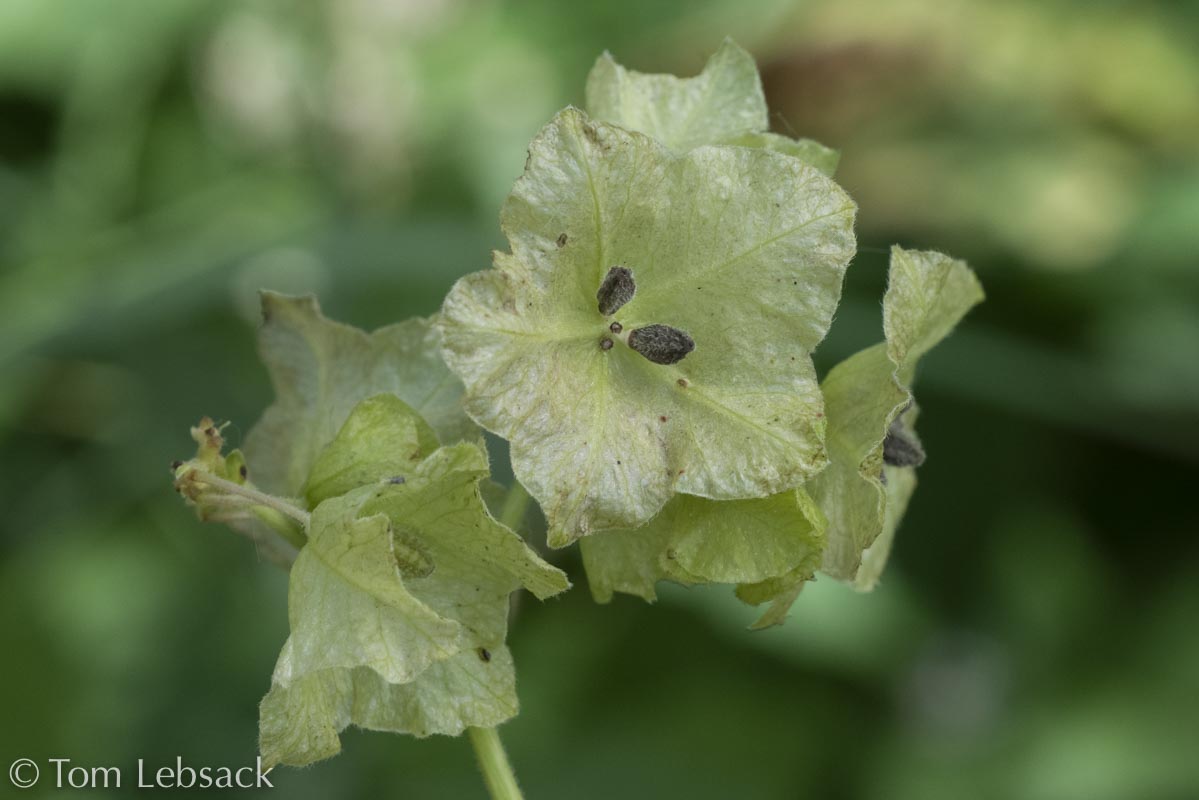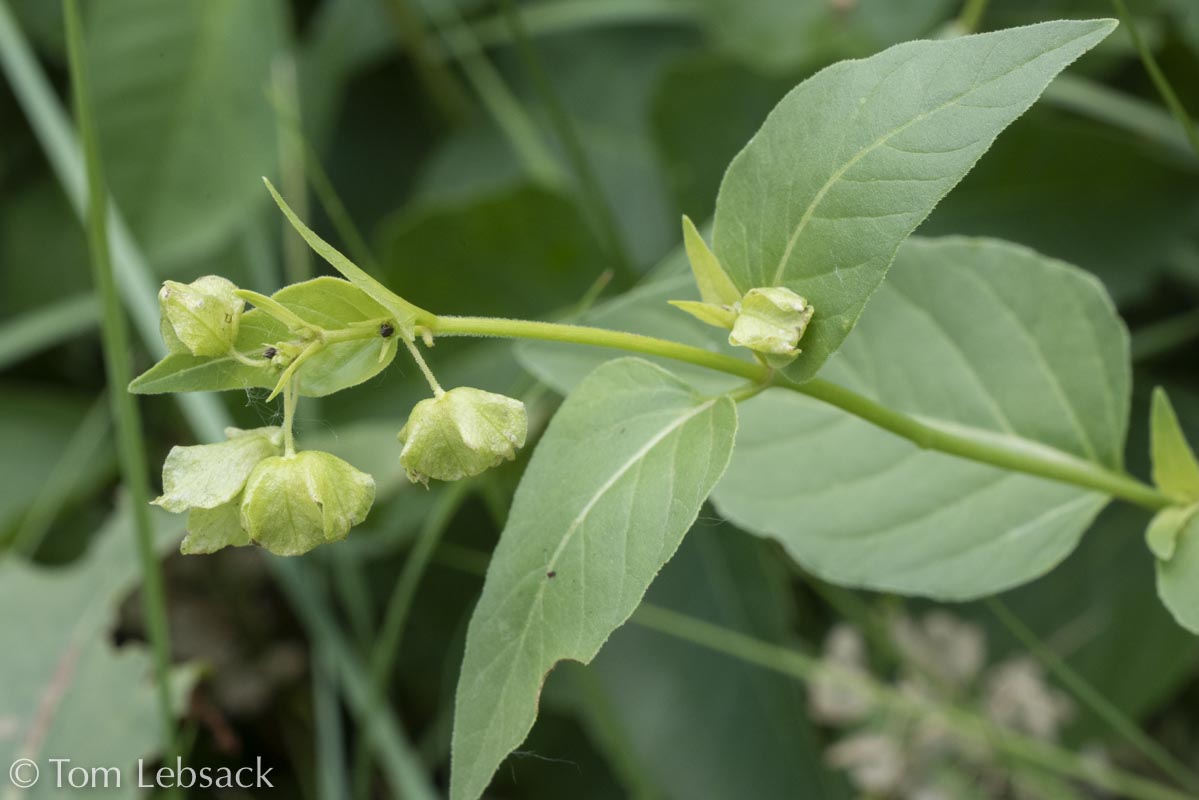(White Four O’clock)
| Scientific Name | Mirabilis albida (Mirabilis hirsuta) | USDA PLANTS Symbol | MIAL4 |
| Common Name | White Four O'clock, Hairy Four O'clock | ITIS Taxonomic Serial No. | 19626 |
| Family | Nyctaginaceae (Four O'clock) | SEINet Reference |
Click Here |
| Description |
Life zones and habitat: Plains to foothills (3900 to 8200 ft.); dry, sandy or rocky soils in meadows and hillsides. Plant: Perennial with erect or decumbent, branching stems 30 to 48 inches tall; herbage often hairy, especially the upper portions. Leaves: Lanceolate-oblong to ovate, opposite leaves, 3/8 to 4 inches long and 1/4 to 2-1/2 inches wide; sessile or on petioles up to 1-5/8 inches long; surfaces green to blue-gray, and smooth to hairy. Inflorescence: White to pink or purple clusters of 2 or 3 flowers on hairy peduncles up to an inch long in terminal, few-branched panicles, or solitary in leaf axils; each cluster enclosed by a bell-shaped involucre up to 1/4-inch long in flower and twices as long in fruit; involucre bracts are hairy, and pale green or blushed with purple; flowers blooms early in the day, dropping their petals soon after. Bloom Period: June to September. Fruit: Hairy, brown to dark brown obovoid to narrowly obovate seed capsules less than 1/4-inch long. References: "Flora of Colorado" by Jennifer Ackerfield and SEINet. Note: Images here were taken at mid-day after all of the petals had dropped, so you see the greenish-white, spreading involucre bracts and the dark brown seed capsules. |
BONAP Distribution Map Map Color Key |
Colorado Status: Native |
© Tom Lebsack 2025
Banner photo: Castilleja rhexifolia and a brewing storm over the San Juan Mountains
I try to provide accurate, up-to-date, and relevant information, but cannot guarantee the completeness or accuracy of any information presented on this website. I use authoritative references to insure high standards of accuracy and review and update the information frequently.



